Chemical Compounds
When we talk about chemicals, we know there are two
types of chemicals, Organic and Inorganic. Organic compounds are carbon-containing compounds, whereas inorganic compounds refer to compounds
containing all the elements present in the periodic table.
Definition of chemicals
If we take the basic concept of chemicals, I must say chemicals are the substances that are produced synthetically in labs or industries. With keen analysis and proper qualitative and quantitative analysis, these chemicals are synthesized. Or maybe the word chemical refers to all the chemical elements and compounds.
These chemicals can be in form of pure
substances or a mixture of elements. All the chemicals that are involved in
chemical reactions are chemical species that can be neutral, cationic, or
anionic.
The classification of organic compounds reveals examples of compounds based on different characteristics. Aromatic
compounds, alcohols, aldehydes, alkenes, alkynes, amines, carbonyl
compounds, sulfates, phosphates, esters, etc are
all examples of organic compounds.
The field of organic chemistry known as petrochemistry is concerned with petroleum. Petrochemicals are compounds that are produced from crude oil and natural gas. The refining process, which includes distilling or cracking crude oil or gas, extracts these chemicals. The essential petrochemicals produced in the process include benzene, ethylene, propylene, and toluene.
·
In the table given below, I
enlisted some organic compounds and their applications to make them easy to
understand.
List of 100 Important Organic Compounds and their Applications
|
Name of OC |
Structure |
Applications of Organic Compound |
Methane |
|
Methane is a combustible, odorless, colorless gas. It is mostly used as a source of heat and light. It's also employed in the production of organic compounds such as methyl alcohol, formaldehyde, chloroform, etc. It is used in the making of automobile rubber tires and printing ink |
Ethane |
|
Ethane is mostly used to make ethylene, which is subsequently utilized by the petrochemical industry to make a variety of intermediate chemicals, the majority of which are eventually transformed into plastics. |
Butane |
|
It is a highly combustible, transparent, inert, and easily liquefied gas. It is commonly used as a fuel (LPG) for cigarette lighters and portable stoves, as well as a propellant in sprays, a heating fuel, a refrigerant, and in the manufacturing of a variety of items. |
Methyl bromide |
In agriculture and transport, it is used to control fungi, weeds, insects, nematodes, and rodents. Agricultural growers sanitize the soil by injecting methyl bromide approximately two feet into the ground before planting crops. |
|
Ethyl bromide |
|
Ethyl bromide is employed as an alkylation reagent, as well as a precursor in the production of pharmaceuticals, ammonium compounds, dyes, and pigments. |
Methyl alcohol |
|
It is predominantly used as an important ingredient to contribute to the manufacturing of inks, resins, varnishes, dyes, methylated spirit, synthetic color, paint, and polish, as well as a fuel for motors when mixed with petrol. It's also utilized to make vital medicinal chemicals and products including cholesterol, streptomycin, vitamins, and hormones as a solvent. |
Ethyl alcohol |
|
It's used to make wine and other alcoholic beverages, tincture, varnish, and polish, in the form of solvents, in methylated spirit, in artificial colors in perfumes and fruit scents, in transparent soaps, in spirit lamps and stoves, in the form of motor vehicle fuel for wound cleaning, and in the form of insecticide, including other things. |
Formaldehyde |
|
Insecticides, gelatin film fixation on photographic plates, waterproof fabrics made by mixing it with eggs outer whitely component, and so on. |
Acetaldehyde |
|
In the manufacture of colored pharmaceuticals, disinfectants, perfumes, drugs, meta-acetaldehyde medicine used for relaxing, plastics, and resins. It is also used as precursor information of acetic acid, pyridine derivatives, crotonaldehyde, pentaerythritol, etc. |
Acetone |
|
Acetone is a chemical that is used to manufacture plastic, fibers, medicines, sulfone, chloroform, and iodoform, among other chemicals. It can also be used to dissolve other materials. It is found naturally in plants, trees, volcanic gases, forest fires, and as a byproduct of body fat decomposition. It can be found in vehicle emissions, cigarette smoke, and cemeteries. |
Formic acid |
|
It's incorporated in insecticides, fruit juice preservation, leather, and rubber trade. Moreover, used as an antibacterial agent in livestock feed, organic agricultural food production, and food packaging additives. |
Acetic acid |
|
In the form of vinegar, as a lab reagent, in the preparation of dishes and jellies. Also used to make metal acetates, which are used in some printing processes; vinyl acetate, which is used to make plastics. Cellulose acetate is used in the manufacturing of photographic films and textiles; and volatile organic esters. |
Oxalic acid |
|
Oxalic acid serves as a bleaching agent, metallic polish, stain remover, and mordant, along with other things. It's used to bleach straw hats, leather, and wood. Oxalic acid removes tarnish, rust, and ink stains by acting as a reducing agent for metal oxides. |
Methyl cyanide |
|
Acrylic fibers, medicine, cosmetics, nitrile rubber, batteries, insecticides, and inorganic salts are all made with it. It is being used to extract fatty acids from the fish liver, animal, and vegetable oils, as well as recrystallize steroids and remove tars, phenols, and coloring matter from hydrocarbons. |
Ethyl cyanide |
|
It is used as a solvent and to manufacture other chemicals. |
Methyl isocyanide |
|
It is a clear and transparent liquid, used in the production of pesticides, rubber, and the synthesis of other compounds. |
Urea |
|
Urea is used as a fertilizer and feed supplement, in the synthesis of formaldehyde, plastic, medicines, etc. It is also used to treat different skin allergies and infections. |
Acetyl chloride |
|
It is used as a reagent for the synthesis of esters and amides of acetic acid such as acetamide, acetic anhydride, etc. Acetyl chloride is also utilized to make medicines and pesticides. |
Acetic anhydride |
|
Used in the production of drugs, dyes, plastics, explosives, and in the color industry. Employed in the synthesis of aspirin or synthetic silk from cellulose etc. |
Ethylamine |
|
It is used in the production of plastics, dyes, and raw materials of herbicides. |
Sucrose |
|
It is used as a sweetener in foodstuff and carbonated beverages, in syrup production, sweets, preserves and jams, fresheners, medical items, and caramel. Sucrose also serves as a chemical transporter for surfactants, emulsifying agents, and other dextrose derivatives. |
Maltose |
|
It can be used to make tough candies, brewing, and is a low-cost sweetener, an inactive ingredient in medications. I also act as an intermediate of fermentation.
|
Glucose |
|
An important medical use of glucose is to treat hypoglycemia patients (low blood sugar level). It is used in the production of wine, sweets, preservatives, and drugs. |
Fructose |
|
It is used in the food industry to enhance flavor, low-calorie food, energy drinks, baking items dairy products, etc. |
Chloroform |
|
It is used as anesthesia for surgical purposes, used as a solvent for insecticide, adhesives, oils, fats, resins, etc. |
Iodoform |
|
It is used to treat skin diseases as well as an antiseptic to treat infections and kill bacteria and fungi. |
Carbon tetrachloride |
|
It is used in fire extinguishers due to its non-flammable characteristic. Also used in the manufacture of drugs, rubber, chemicals, propellants, and as a fumigant. |
Phosgene |
|
Used in the production of a different class of chemicals, medicines, coatings, sealants, plastics, and intermediary chemicals. |
Chloral |
|
It is used for medical purposes such as sedation to relieve anxiety, surgical induction, relieving pain, and taking away alcohol habits. |
Sodium
|
|
Used for the synthesis of other chemicals industrially such as formic acid. It has various applications in printing media, additives, detergents, and the leather industry. |
Allyl alcohol |
|
It is used for agricultural purposes such as insecticide, herbicide, fungicide antibacterial agent, and plants metabolites. Also used as raw material for glycerol formation. |
Phosphorous chloride |
|
Used to make other chemicals, catalysts, dyes, gasoline pesticides, etc. |
Biurate |
|
These are the crystals of uric acid that are found in acidic urine. |
Benzene |
|
Benzene has a variety of applications as it is considered the most produced chemical. It is used as a solvent to make other chemicals that manufacture resins, synthetic fiber, lubricants, drugs, surfactants, and agricultural products. |
Benzoic acid |
|
It is used in the production of medicine (skin conditions) insect repellants, dyes, scents, food preservatives and regulates the pH of the skin. |
Phenol |
|
Phenol is used as house cleaners as well as in mouthwashes and as antiseptic/disinfectant in surgical wards. It is used as an intermediate in the synthesis of different products. |
Aniline |
|
It is an anti-oxidant, used in the making of different chemicals, dyes, drugs, explosives, and agricultural insecticides/ pesticides. |
Benzaldehyde
|
|
It is used in the color industry, for manufacturing dyes, soaps, scents, food industry as a preservative and additive. |
Chloro- benzene |
|
It is a high-boiling solvent that is used to make cosmetic products, paints, enamels, dyes, polishes, medicines, herbicides adhesives, etc. |
Benzamide |
|
It possesses biological activities like anti-inflammatory, analgesic, anti-microbial, anti-cancer, etc. |
Sodium phenoxide |
|
It is used as an antiseptic, precursor for the manufacture of other organic compounds. |
Nitrobenzene |
|
Use for production of aniline, oils, lubricants for machinery, drugs, dyes, etc. |
|
Toluene |
|
It is used as a constituent of inks, paint thinners, rubber, cosmetic products, glues, cleaning agents, etc. |
Sodium benzoate |
|
It is being used in the food industry to prevent spoiling caused by dangerous bacteria, yeasts, and molds. It also helps to keep food fresh by slowing or preventing color, flavor, PH, and texture changes. Salad dressings, for example, are a popular source of sodium benzoate. |
Cyano benzene |
|
It's a solvent for Nitrile rubber, specialized surface coatings, resins, polymers, and metal salts. |
Anisol |
|
Anisole has been employed as a solvent, a flavor, a vermicide, in the production of perfumes, and in organic synthesis. |
Picric acid |
|
Picric acid is a chemical compound that is used to make explosives, matches, and electronic batteries. It's also used to etch copper and make colored glass, as well as in the leather industry and dye production. Picric acid is a highly unstable and highly combustible substance. |
Benzyl alcohol |
|
Benzyl alcohol is an anti-parasite prescribed topically for skin medicine. The topical application of benzyl alcohol is used to cure head lice. |
Urotropine |
|
It is often used in the manufacturing of phenolic resins and modified epoxy molded compounds as a hardening component. It's especially effective for the long-term prophylactic treatment of urinary tract infections. |
Benzyl amine |
|
Benzylamine is used to make a variety of medications, including alniditan, lacosamide, moxifloxacin, and nebivolol in the pharmaceutical industry. |
Benzyl chloride |
|
Benzyl chloride is a white liquid with a pungent, unpleasant odor that induces eye tears. Dyes, plasticizers, medicines, lubricants, resins, and cosmetics are all made with it. |
Methylene chloride |
|
It is utilized in a variety of manufacturing processes, including paint scraping, pharmaceutical products, and metal cleaning and sanitizing. Inhalation and skin contact are the most prominent methods of methylene chloride exposure. |
Dimethyl ether |
|
Dimethyl ether could be utilized as a propane alternative in LPG, which is used as an industrial and household fuel. In propane autogas, It can be deployed as a blendstock. It's also a potential biofuel for diesel engine turbines. |
Diethyl ether |
|
Waxes, fats, oils, fragrances, alkaloids, colors, resins, polymers, hydrocarbons, raw latex, and smokeless powder all use it as a solvent. It's used as a coolant, in petroleum diesel, in dry cleaning, as an extractant, and as a chemical reagent for numerous organic reactions. |
Ethylene |
|
Ethylene is used to make manufactured plastics, antifreeze, fibers, ethylene oxide, PVC, alcohol, methane, and other organic compounds. It is employed in the ripening and preservation of fruits, and anesthetic in the oxy-ethylene flame. |
Acetylene |
|
Acetylene is an essential industrial raw material that is used to make solvents and alkenes, which are then used as monomers in the creation of plastics. It's also used in the glass sector for soldering, cutting, flaming, and mechanical heating and stiffening. In the production of light, oxy-ethylene flame, Marcelin anesthesia, neoprene (artificial rubber), artificial ripening, and so forth. |
Stearic acid |
|
It is an emollient, moisturizer, and emollient that softens skin and helps formulations stay together. Hundreds of skincare products include stearic acid, including, sunscreens, cosmetics, soap, and soothing lotion. It can be applied to the surface of food as a coating agent to refine, maintain quality, and prevent water evaporation. |
Oleic acid |
|
Oleic acid-containing oils are utilized to supplement the diet's saturated fats. By lowering cholesterol and reducing inflammation, oleic acid may help to treat cardiac problems. It's also used in soaps as a cleaning agent, in lotions and creams as a moisturizing and softening agent. |
Potassium acetate |
|
It is a potassium supplement that is used to diagnose and treat potassium deficiency. Potassium is necessary for the heart, muscles, and nerves to function properly. Potassium deficiency or excess can lead to major health issues. |
Calcium acetate |
|
Calcium acetate is used to control high blood phosphorus levels in dialysis patients with kidney disease. Calcium acetate belongs to the group of drugs known as phosphate binders. |
|
|
It is often used as part of a silage treatment ensiling agent. Anaerobic fermentation reduces the synthesis of undesirable side reaction products such as propionic acid while boosting the formation of beneficial lactic acid. |
Trichloro acetone |
|
It is used for the synthesis of chloroform. |
Phenyl isocyanide |
|
It is toxic and should be handled with precautions. It is used as a laboratory reagent and to synthesize other compounds. |
Cumene |
|
It's a common chemical precursor in the manufacture of phenol and acetone. Cumene is a natural component of coal tar and petroleum and is used as a thinner for paints, surface coatings, and enamels. |
Benzene diazonium chloride |
|
They're employed in the dyeing of clothes. They can be used to make a wide range of molecules, particularly aryl derivatives. |
Hexachloro- benzene |
|
It's a fungicide that's used to keep fungus away from onions, sorghum, wheat, and other grains. It was also used to produce synthetic rubber, explosives, and ammunition. |
Acetophenone |
|
Acetophenone is used as a scent in soaps and fragrances, as a flavoring component in foods, and as a solvent for polymers and resins. Humans may experience skin irritation and temporary eye inflammation after being exposed to its vapors for a short time period. |
Benzene sulphonic acid |
|
It is used as a reagent in organic synthesis, in the plastic industry, manufacturing of artificial sweeteners, solute colors, and sulpha medicines, among other things. |
Performic acid |
|
It has high oxidizing properties. It is used in the organic synthesis of epoxidation, hydroxylation, and oxidation processes. Performic acid is extensively used to disinfect equipment in the medical and food industries. |
Naphthalene |
|
The aromatic hydrocarbon naphthalene can be found in coal tar or crude oil. Plastics, resins, fuels, and dyes all use naphthalene as raw materials. It's also used as a fumigant insecticide, which works by converting a solid into a poisonous vapor. (Sublimation) |
Acrylonitrile |
|
Acrylic and synthetic fiber fibers, which are used in garments and textiles such as athletic wear, carpets, and furnishing, are made from acrylonitrile. Acrylic fibers are also employed as a precursor for carbon fiber synthesis. |
Anthracene |
|
Anthracene can be used as a wood and lumber preservative as well as a crop pesticide. It is used to make the red color alizarin dye as well as other dyes. |
Glycerol |
|
It is associated with the production of nitro-glycerine, ink stamps, the cleaning of watch components, shoe polish and beauty products, transparent soaps, pain reliever drugs for any injured portion of the body organs, in preservation of sweets, wine, and fruits, and so on. |
Resorcinol |
|
An important role in treating skin conditions such as eczema, seborrheic dermatitis, psoriasis and removing hard and scaly skin |
Phthalic acid |
|
It is helpful in the production of dyes, perfumes, and other chemicals. |
Salicylic acid |
|
It is used for the treatment of different skin conditions such as dermatitis, psoriasis, acne dandruff, etc. |
Citric acid |
|
Its main purpose is flavoring agents and the preservation of food. Also used as a disinfectant in medicines. |
Catechol |
|
An important role in the pharmaceutical industry as well as in plastic and printing presses |
Ascorbic acid |
|
An anti-oxidant used to cure scurvy that is a deficiency of vitamin C. |
Styrene |
|
It is used by different industries to produce resins, rubber, latex that can manufacture plastic products. |
Methyl ethanoate |
|
It is a food additive and flavoring agent used in cosmetics, polishes, coatings, cleaning products, etc. |
Sodium bicarbonate |
|
It is also known as baking soda is used in food items, also relieves stomach issues. It is an antacid. |
Succinic acid |
|
An antibiotic agent that is used in foods and to manufacture chemicals in pharmaceutical industries. |
Lactic acid |
|
It is utilized as a food preservative, flavoring and enhancing the texture of the skin. |
Pyrene |
|
It is used in the production of pesticides, PVCs, dyes, etc. |
Limonene |
|
It is used by pharmaceutical skin products to enhance penetration in skin, cosmetics, hygienic and cleaning products, etc. |
Isoprene |
|
Used to prepare a wide variety of chemicals, plastic, natural products, and raw materials. |
Xylene |
|
It is a solvent, used for cleaning, paint thinning, varnishes, in the printing and leather industries. |
Quinone |
|
Used for the synthesis of anti-cancer drugs. |
Thiophene |
|
It is used for medicinal purposes to treat tumors. Also used to inhibit corrosion of metals and in LED materials. |
Methyl cyclopropane |
|
It is used for the handling and care of vegetables and fruits. |
Cyclooctene |
|
It is used for the production of polymers at a large scale. |
Azulene |
|
It is a biological compound that is used as a moisturizer. It is used to cure skin rashes, irritations, and itchiness. |
Tropone |
|
It is the main constituent of cycloaddition. |
Furan |
|
It is used for the production of agrochemicals and drugs. It is also present in cigarette smoke. |
Pyrimidine |
|
It is an important medicinal compound that is used to synthesize essential pharmaceutical drugs. It has anti-tumor, anti-bacterial, anti-malarial properties, etc. |
Pyrazole |
|
It is used to treat fungal, microbial, inflammatory, viral infections. More prominently it has anti-cancer properties. |
Dioxane |
|
It is used for the synthesis of chemicals and reagents. It is also used as a stabilizer. |
Azamine |
|
It is an antibiotic that is used to cure skin, eye, and respiratory tract infections caused by bacteria. |
Indole |
|
It has various applications in the medicinal field such as depression, cancer, viral/ microbial infections, etc. |

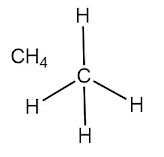



















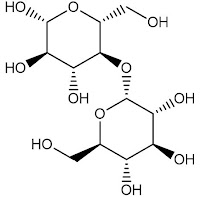




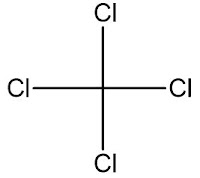












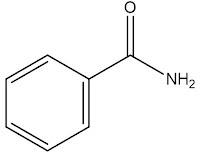








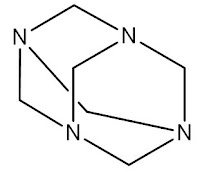

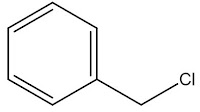













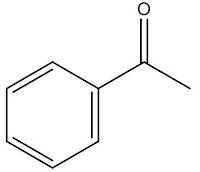



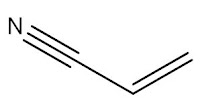






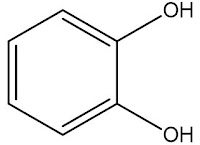






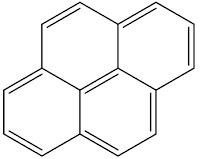

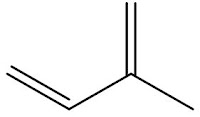



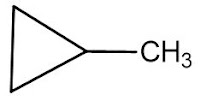













Social Plugin